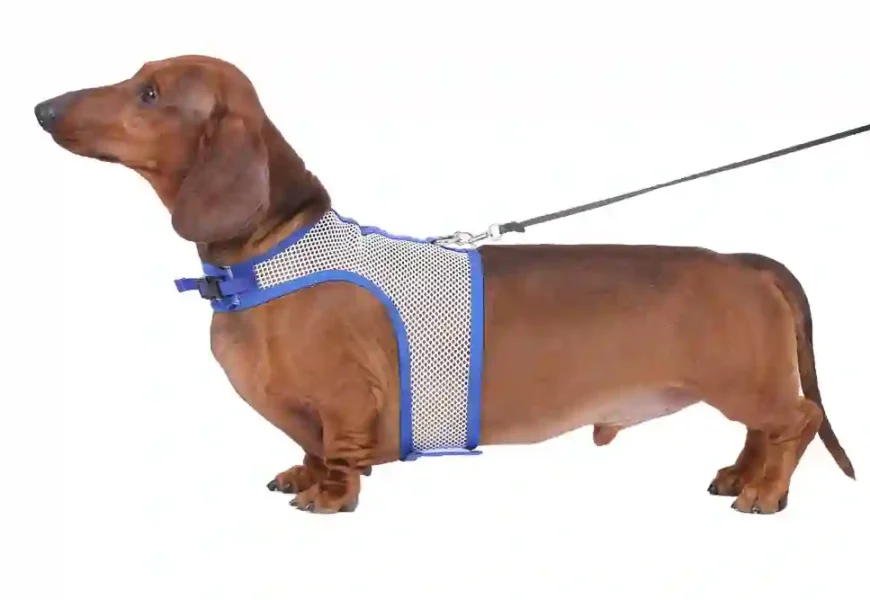Small dogs, with their unique physiques and personalities, require harnesses that are not only size-appropriate but also comfortable and safe. Finding the perfect harness for your small dog can be a challenge, as their delicate frames and energetic nature demand a balance of comfort, security, and style. This comprehensive guide aims to help you navigate the wide array of options and select the best harness for your petite companion.
1. Understanding Small Dog Needs:
Small dogs, such as Chihuahuas, Pomeranians, and Yorkies, have different requirements from their larger counterparts. Their harnesses must be lightweight to avoid burdening their small frames, yet sturdy enough to handle their often spirited walks. Additionally, small dogs can be more prone to injuries like tracheal collapse, making a well-designed harness crucial for their safety.
2. Key Features to Look For:
When shopping for a small dog harness, consider the following key features:
- Size and Adjustability: A snug fit is vital. Look for harnesses with adjustable straps to fine-tune the fit. Avoid harnesses that are too loose, as small dogs can often wiggle out of them, or too tight, as they can cause discomfort and breathing difficulties.
- Material: Breathable, lightweight materials like mesh are ideal for small dogs. They provide comfort without adding extra weight. For colder climates, consider harnesses with a bit of padding for added warmth.
- Ease of Use: A harness that is easy to put on and take off is crucial, especially for small dogs that might not stay still during the process. Quick-release buckles and Velcro straps are user-friendly options.
- Safety Features: Reflective materials for visibility during night walks and a sturdy D-ring for leash attachment are important for your dog’s safety.
- Comfort: Padding around the chest and belly can prevent rubbing and chafing. A properly positioned chest ring can help distribute pressure evenly, especially important for small breeds prone to tracheal collapse.
3. The Best Harness Types for Small Dogs:
- Step-In Harnesses: Ideal for tiny breeds, these harnesses are typically lightweight and easy to put on, making them a good choice for small, squirmy dogs.
- Vest Harnesses: Offering more coverage and support, vest harnesses are often more comfortable for small dogs. They distribute pressure evenly and are usually padded for extra comfort.
- Adjustable Harnesses: Harnesses with multiple adjustable points are great for growing puppies or dogs between standard size categories, ensuring a perfect fit.
- No-Pull Harnesses: For small dogs that tend to pull, a no-pull harness with a front clip can help control pulling without putting pressure on their delicate necks.
4. Top-Rated Harnesses for Small Dogs:
- Puppia Soft Dog Harness: Renowned for its soft, breathable mesh material, the Puppia harness is a favorite among small dog owners. It’s lightweight, comfortable, and comes in a variety of colors.
- Ruffwear Front Range All-Day Adventure Harness: Ideal for active small dogs, this harness offers four points of adjustability for a perfect fit, a padded chest and belly panel for comfort, and a front leash attachment for no-pull training.
- Kurgo Tru-Fit Smart Harness: This harness is designed with safety in mind, doubling as a car harness. It has five adjustment points for a tailored fit and includes a no-pull D-ring.
- Comfort Fit Metric USA Small Dog Harness: Specifically designed for small breeds, this harness is easy to put on and offers a comfortable, snug fit with its padded interior and adjustable straps.
5. Fitting and Adjustment Tips:
- Measuring Your Dog: Measure your dog’s neck and chest girth to ensure you choose the right size. Follow the manufacturer’s sizing guide carefully.
- Checking the Fit: Once on, you should be able to fit two fingers between the harness and your dog’s body. Check for any signs of discomfort or restriction of movement.
- Adjustment: Adjust the straps to your dog’s body. Remember that puppies grow quickly, so regular adjustments are necessary.
6. Training Your Dog to Wear a Harness:
Some small dogs may initially resist wearing a harness. Gradually acclimate your dog to their new harness by allowing them to wear it for short periods inside the house, pairing it with positive reinforcements like treats and praise.
7. Maintenance and Care:
Regularly inspect the harness for signs of wear and tear. Keep it clean by following the manufacturer’s washing instructions. A well-maintained harness ensures safety and longevity.
Conclusion:
Selecting the best harness for your small dog requires careful consideration of their specific needs. The perfect harness should offer a balance of comfort, safety, and adjustability, tailored to your dog’s size and lifestyle. By choosing the right harness and ensuring a proper fit, you can enhance the walking experience for both you and your petite companion, ensuring many happy, safe, and stylish strolls together.










